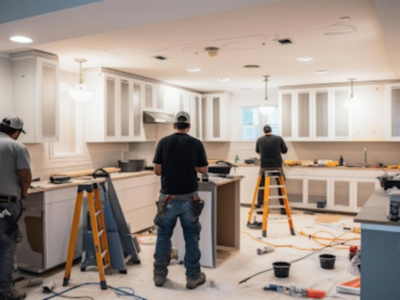
Our kitchen is one of the most important parts of our house, it is the place where positivity is of the utmost concern. You might be wondering why so. It is because we cook meals for our family members and our distinguished guests in our kitchen, and meals should be prepared with love and in a positive environment because food with positive energy and love energizes us to work all day long in our best capacity.
Big, open kitchens are everyone’s first choice because they are easy to set up, and being spacious makes them even more attractive and easy to work in. There is no such thing as suffocation or congestion in the big kitchens. But what about the small kitchens that do not have much space in them? In kitchens with small spaces, it is seen more often that congestion and lack of interest in the work occur.
So, what should be done to add positivity and remove the congestion from the small kitchen areas? Do not worry! We are here to solve the problem of your small kitchen area. Let’s name it Small Kitchen Big Makeover.
We have segregated the whole process into 5 simple steps to make it easier and faster for you to do your small kitchen’s big makeover.
Following are the steps to organize your small kitchen:
Clear, Cleanse, and Purge:
Make sure that you clear the spaces regularly. When we talk about arranging a small kitchen, the first thing that pops up in my head is that the kitchen should be clear! clear! And clear! The cleaner your kitchen is, the bigger it looks.
Keeping a small kitchen clean can be very impactful in both ways: functionality and aesthetics. In a small space, cluttering happens quickly, which makes it look even smaller and more congested. By maintaining cleanliness, you not only create a more pleasant environment to work in but also make the available space.
Regular cleaning avoids the buildup of grease, grime, and food particles, which can attract pests and cause unpleasant odors which is very easy to take place in small spaces. It also reduces the risk of cross-contamination and foodborne illnesses, which promotes a healthier cooking environment.
Segregate the Necessities:
Segregating necessary items in a small kitchen is key to creating space and maintaining organization. By prioritizing essential items and cleverly storing them, you can maximize the available space and make the kitchen appear larger and more functional.
Start with the first step, clearing the space, and then identify items that are used more often versus those that are rarely used. Store everyday essentials like cooking utensils, pots, and pans within easy reach, either by hanging them on hooks or storing them in accessible drawers and cabinets. Utilize vertical space with shelves or racks to store items such as spices, condiments, and small appliances.
Put items together as availability:
Arranging items in a small kitchen based on availability is a strategic approach for creating an illusion of spaciousness and efficient functionality. Start by evaluating the available storage options and grouping similar items. Place frequently used items within easy reach, while less frequently used ones can be stored in less accessible areas.
Utilize vertical space efficiently by installing shelves or racks to store items such as spices, cookbooks, or decorative pieces. Consider using clear containers or transparent jars to store dry goods, which not only save space but also create a treat for your eyes whenever you enter your cute and small aesthetic kitchen.
Arrange kitchen tools and utensils based on frequency of use, with everyday essentials easily accessible near the cooking area.
Choose the right color palette:
Choosing the right color palette for your small kitchen is very important. It greatly impacts the size, mood, and overall aesthetic of the space, especially when it’s a small space. Lighter colors, such as white, cream, or pastels, can visually expand the room and create a sense of airiness and openness. These hues reflect light, making the space feel brighter and more inviting.
Whereas, dark colors can make a small kitchen feel congested and suffocating if not used thoughtfully. However, using darker tones as accents or in strategic areas can add depth and contrast, which can enhance the visual interest of the space.
See the style and atmosphere you want to achieve in your kitchen. Soft, neutral tones create a serene and timeless look, while bold colors reflect personality and vibrancy.
Segregate the least used items:
Segregating the least used items in your small kitchen is an effective strategy for maximizing space and creating the feel of a larger area. Also visit kitchen design dubai. Begin by identifying items that are not used much, such as specialty appliances, oversized cookware, or holiday dishes. These items can be stored in less accessible areas, such as high cabinets, shelves above the refrigerator, or even in storage containers under the bed or in a closet.
When you keep only essential and frequently used items within easy reach, you free up valuable space on countertops and in cabinets, making the kitchen feel more open and spacious. Regularly rearrange your kitchen inventory and clear items that are no longer needed or used.
How do you select the right color palette and furniture for your small kitchen?
Selecting the right color palette and furniture for your small kitchen involves a careful selection of both aesthetic preferences and practicality to increase the space and functionality.
- Start by assessing the natural light and size of the space. Lighter colors like white, cream, or soft pastels can visually expand the room, making it feel more airy and open.
- Whereas, darker colors can create a cozy and intimate atmosphere but may make the space feel smaller if not used strategically.
When choosing furniture, select pieces that fit the size of the kitchen.
- Choose multifunctional furniture, such as a drop-leaf table or nesting stools, that can be easily tucked away when not in use to free up space.
- Choose streamlined designs with clean lines to prevent the room from feeling cluttered.
Prioritize storage solutions to keep countertops clear and maximize available space. Look for cabinets with enough storage, and consider using open shelving to display decorative items or frequently used cookware.
Conclusion:
So, these are some master tips and tricks to maximize the space in your kitchen. By using these techniques step by step, you can make your kitchen look more spacious than its actual size.
Make sure to have your vision, because that will enhance the aesthetics and outlook of your kitchen space.







